Are you a fan of turntables and want to know which one is better among Ortofon 2M Red vs Blue? You are on the right blog post. Being an audiophile, I always keep playing with different turntables and accessories. This time, I got to try my hands on these two famous cartridges from Ortofon.
I invite you to check out this comparison guide in which I'll dissect the 6 factors. Let's see which cartridge knocks out the other!
Quick Comparison
I carefully compared the Ortofon 2M Red and Blue cartridges when upgrading my turntable setup. While they share the same body traits, they differ in their design and performance. Here is a nitty-gritty look at both cartridges:
- Blue has a nude elliptical diamond stylus, compared to the standard elliptical stylus on the Red.
- The blue cartridge has an improved channel separation, resulting in a more spacious and 3D soundstage.
- Thanks to its advanced stylus design, Blue gives more accurate and detailed sound reproduction than its competitor.
- The Blue has a slightly lower output of 5.5 mV compared to the Red's output of 6.0 mV.
- The Red is compatible with more devices than the Blue because of its standard design and mounting system.
- The Ortofon 2M Blue costs over twice as much as the Red, making it a little difficult pick for vinyl enthusiasts.
But the above quick comparison throws light on just a few features of both cartridges. Continue reading below, where I'll compare these cartridges regarding 6 factors. Also, get insights into customer's opinions for better clarity. Let's dive deeper into the details!
A Quick Glance at the Specs of Ortofon 2M Blue Moving Magnet Cartridge vs Red Cartridge
Let's quickly have a look at what both cartridges can offer in terms of specs on paper:
Specifications | Ortofon 2M Red | Ortofon 2M Blue |
Stylus type | Elliptical | Nude elliptical |
Stylus radius | 8/18 µm | 8/18 µm |
Frequency response | 20-20,000 Hz | 20-20,000 Hz |
Tracking force | 1.8 g | 1.8 g |
Tracking angle | 20° | 20° |
Tracking ability at recommended tracking force | 70 µm | 80 µm |
Channel separation at 1 kHz | 22 dB | 25 dB |
Channel separation at 15 kHz | 15 dB | 15 dB |
Output | 6.0 mV | 5.5 mV |
DC Resistance | 1300 ohms | 1300 ohms |
Load Resistance | 47000 ohms | 47000 ohms |
Inductance | 700 mH | 700 mH |
Availability |
The above table shows the specs of both cartridges under their hoods. But how do they perform under real-life testing? Let's dive into the details.
The Perks and Tradeoffs of the Ortofon 2M Red
Ortofon 2M Red is a very nice cartridge body with moderate pricing that aims to deliver high-fidelity sound without breaking the bank. Using the 2M Red myself, I've found several noteworthy perks and some tradeoffs that are mentioned below:
Advantages
- It has a standard elliptical stylus that captures great detail from record grooves.
- It delivers a slightly brighter and more analytical sound that many listeners find revealing.
- This cartridge is equipped with good channel separation and stereo imaging properties.
- Its high 6.0 mV output pairs well with most phono preamps.
Disadvantages
- The cartridge lacks some of the refinement and accuracy of pricier Ortofon cartridges.
- The tracking ability of this cartridge body is low and can miss low-end punches in the music.
Last update on 2025-04-16 / Affiliate links / Images from Amazon Product Advertising API
The Perks and Tradeoffs of the Ortofon 2M Blue
Having used the Ortofon 2M Red, I wondered how the pricier 2M Blue would compare. Before we go into details, let me share a quick-witted story.
Last week, I bought an RT85 Reference Turntable for testing. The funny thing is that I didn't know it had a 2M Blue cartridge, while Mike, the senior audio expert at our lab, knew. He lured me for a bet, and guess what? Mike won the wager since I believed this turntable was with 2M Red. Now, I own Mike one Starbucks Grande Latte. Never mind, the revenge is loading.
Last update on 2025-04-16 / Affiliate links / Images from Amazon Product Advertising API
Anyways, in listening to the Blue, there are noticeable benefits – but also some potential drawbacks. Let's have a look:
Advantages
- It comes with a more refined and detailed sound due to its nude elliptical stylus.
- The cartridge body delivers a wider channel separation for a more spacious stereo image.
- Its great suspension controls resonances way better than its competitors.
- This cartridge can catch the nuances and subtleties, giving you a realistic experience.
Disadvantages
- It has a slightly lower output level at 5.5 mV.
- The cartridge is sensitive to dust, demanding extra care for protection.
Last update on 2025-04-16 / Affiliate links / Images from Amazon Product Advertising API
Ortofon 2M Red vs Blue: How Ortofon Cartridges Ranked in the Battle of 6 Rounds
After a pre-qualification round, the main dual between Red vs. Blue comes. The former believes its midrange pricing and performance are enough to beat the competitor.
On the other hand, Blue is jampacked with specs and thinks it got the fans' support despite being pricey. But what's the real deal? Are we looking for a big upset? I will reveal the truth in a couple of minutes below. Let's begin the countdown:
1. 2M Red Stylus vs 2M Blue Stylus Design
While both types use elliptical diamond tips, there is a slight difference in their stylus design. The following points will elaborate on it:
- Build: The Red has a standard elliptical design with an 8/18 µm tip radius. On the other hand, the Blue has an elliptical yet nude design with the same 8/18 µm tip radius.
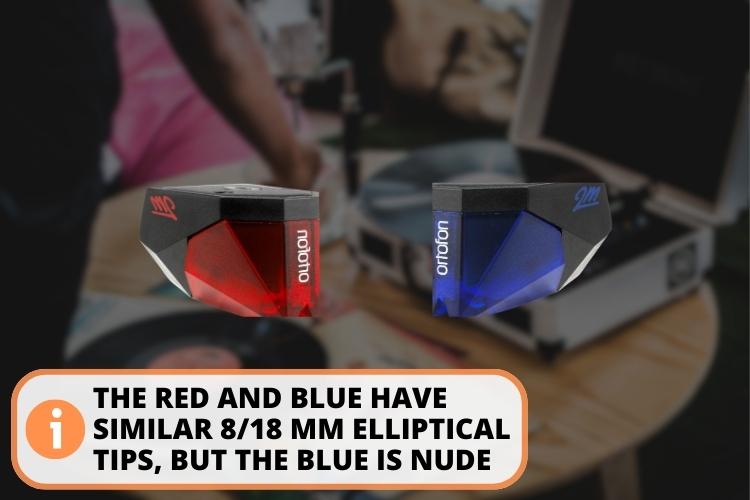
- Design: The tip of the standard Red has a rounded tip narrower than the record's groove width. Meanwhile, the pricier Blue has the whole diamond directly affixed to the cantilever without a metal shank.
- Main Advantages of the Build: The Red's stylus is better at tracking high frequencies and fits into grooves better than spherical designs. In contrast, the benefits of Blue's stylus include lower mass for quicker and more accurate tracing of grooves.
- Main Disadvantages of the Build: The Red has limitations like higher mass, lower contact area, and inner groove distortion. Meanwhile, the Blue has only minor cons like faster tear and alignment issues.
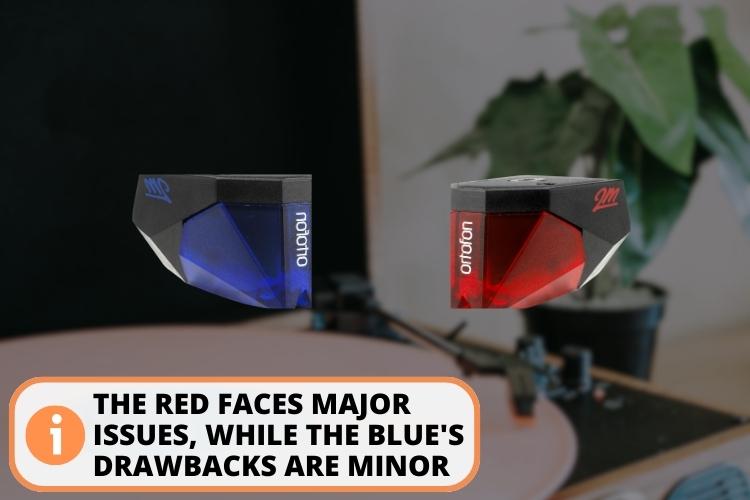
Winner: Looking at the physique of both cartridges, it's not difficult to say that the lead will go with the 2M Blue cartridge body due to its advanced stylus, more benefits, and fewer cons.
2. Sound Quality
When evaluating phono cartridges, sound quality is the ultimate litmus test. While both are enjoyable, the following are some differences that justify Blue's higher cost for vinyl enthusiasts:
- Details: The Blue's nude stylus retrieves more information. Although the affordable 2M Red produces a smooth sound or, as Steve Harris regarded it, "a pleasing ambiance," its Bass lacks the ultimate control.
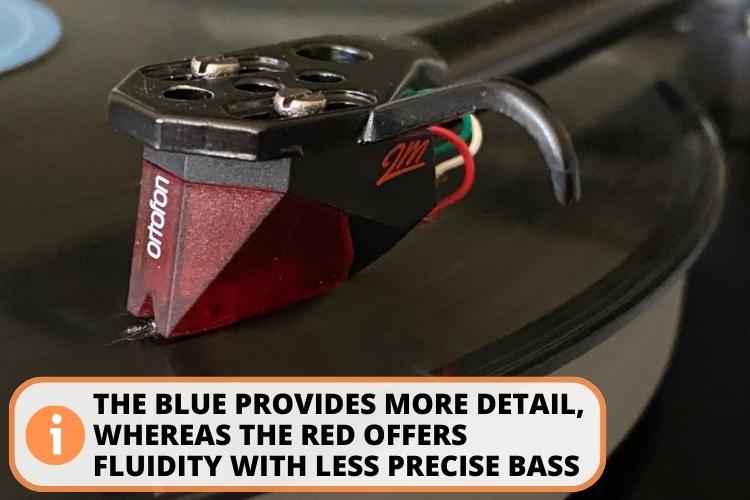
- Clarity: With lower distortion and tracing errors, Blue offers superior transparency and accuracy to the source material. In contrast, the Red has more distortions in the sound and a less accurate response.
- Balance: Covering a wider frequency range with tighter bass and airy treble, the Blue provides a richer, full-bodied sound. Undoubtedly, the Red has a great high-end extension but suffers at a low spectrum and has a low-balanced sound.
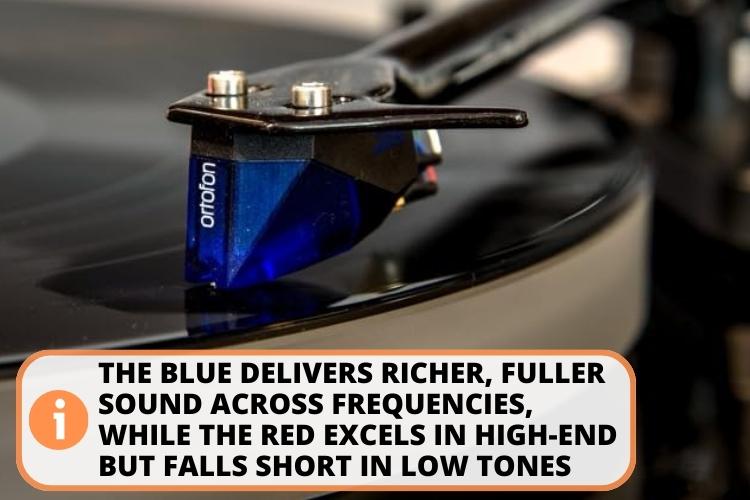
Winner: Well, that's a huge blow. In the sound quality round, Blue is a straight winner here. In simple terms, shifting from Red to Blue is like upgrading from DVD to Blu-Ray.

3. Weight
Comparing the Ortofon 2M Red and Blue models in terms of weight, there is no difference. Both cartridges have an identical weight of 7.2 grams. This ensures no issues balancing tonearms or loading phono preamps between the Red and Blue.
Winner: Both contenders stand equal here resulting in a tie.
4. Price
When evaluating phono cartridges, price plays a significant role in balancing performance versus budget. The standard 2M Red costs approximately $90-$110, making it an affordable entry point into quality hi-fi playback. For the cost, its balanced sound and good compatibility offer solid value.
Meanwhile, the 2M Blue runs over twice that, around $180-$240 retail. Its advanced nude stylus and higher fidelity command the premium sticker.
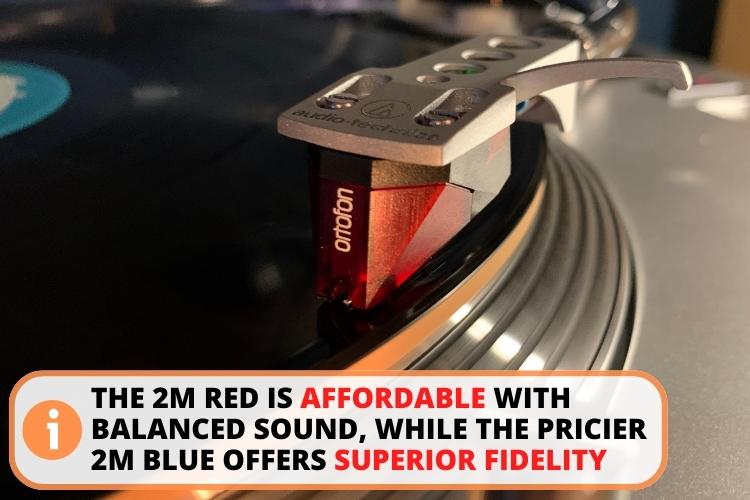
Winner: The Red emerges victor in the fourth round due to its affordability.
5. Compatibility and Upgradeability
Along with price, compatibility is a point that can significantly affect a user's purchase decision. If a cartridge is compatible with other cartridges, it is a significant benefit in terms of users:
- Compatibility: In terms of compatibility, the Red is superior to its contender. This is because it has a standard elliptical design which makes it more fit for a range of turntables and tonearms.
- Upgradeability: Since Both cartridges, apart from the colors, have the same dimensions and come in a standard size, you can upgrade easily from Red to Blue or with a similar accessory.
Winner: Red takes the lead here because of its wide compatibility.
6. Setting Up
We have seen in detail how both cartridges can be compared. Now, let's look at how to set them up to use. There is no difference in setting up as both have almost the same physique. I have used my entry-level turntable, Pro-Ject turntable, to use these cartridges.
Follow the given steps to change or replace the 2M Blue with a Red cartridge:
- Step 1: Carefully remove the Red stylus by pulling it down;
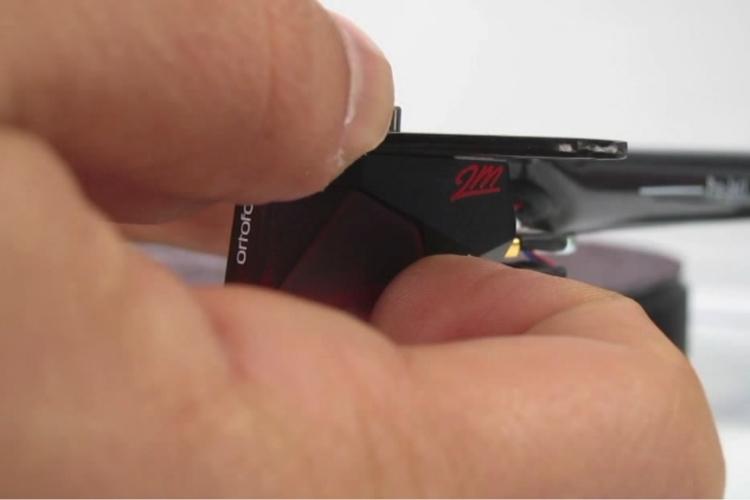
- Step 2: Insert the Blue stylus involved in aligning and push up until you hear a click indicating firm attachment;
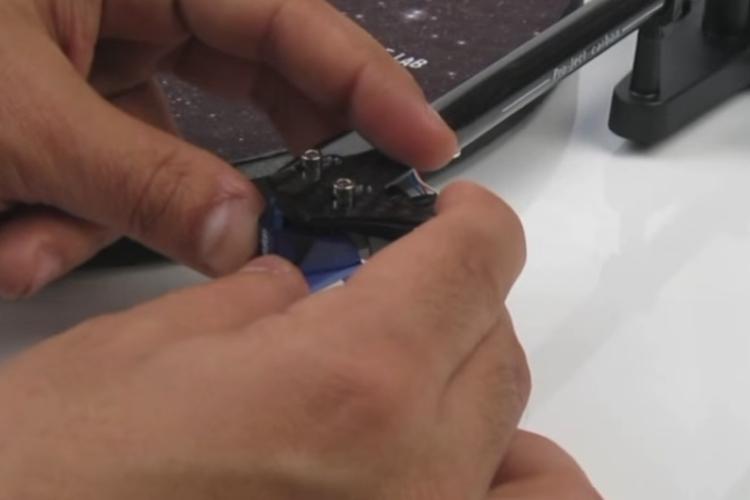
- Step 3: Check the alignment with a protractor and adjust the tonearm tracking force to 1.6 – 2.0 grams dialed-in performance;
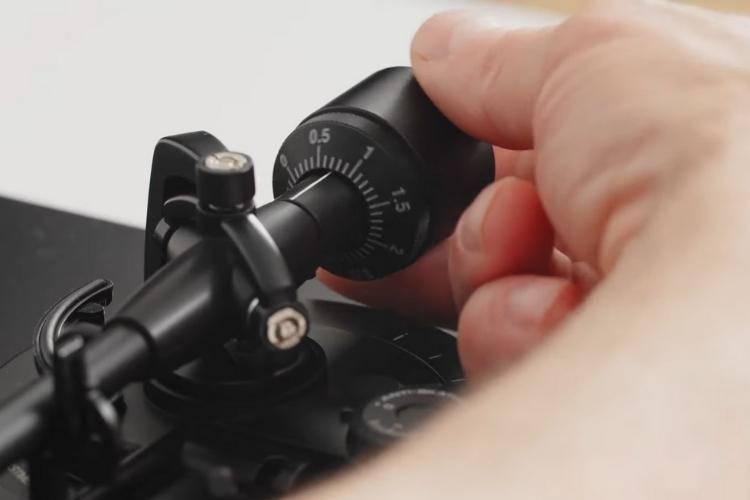
- Step 4: Now, set the anti-skating equal to the tracking force to keep everything stable;
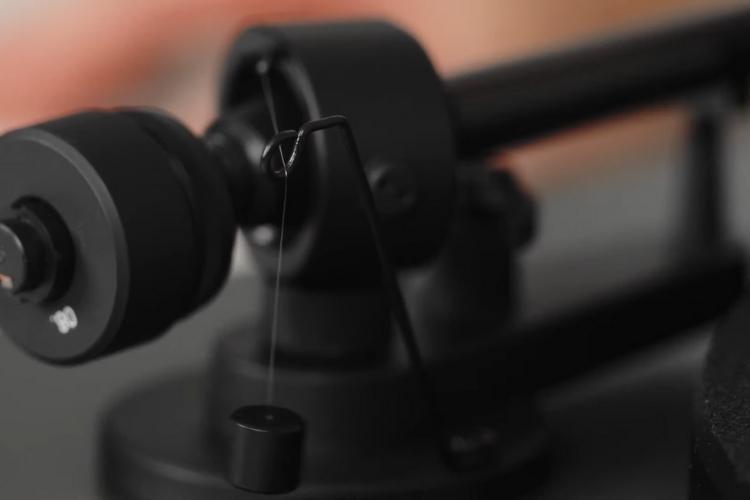
- Step 5: Play the records to verify the operations.
The whole cartridge swap took under 15 minutes, thanks to the compatible 2M design. The best part is that you don't have to consult any expert to use these cartridges.
Winner: The final bout also results in a draw as both cartridges can be set up in the same amount of time.
Ortofon 2M Red vs Blue Testing
I compared the Ortofon 2M Red and Blue cartridges by playing a range of records. I analyzed how both of these cartridges stand in different conditions with different instruments. Differences emerged as below:
Listening Tests
I used 2 wildly different tracks to test both cartridges' strong and weak zones. The results are mentioned below:
First, I tested the cartridges with some composes of Tchaikovsky. Next, I Death of a Martian song. Every time, both carts were excellent. However, 2M has a wide coverage of bass and frequency response. Moreover, the channel separation was quite obvious, with Blue being wider.
Keeping things short, I can recommend these cartridges to the following people:
Who Should Choose 2M Red?
Here's a breakdown of priorities you should know:
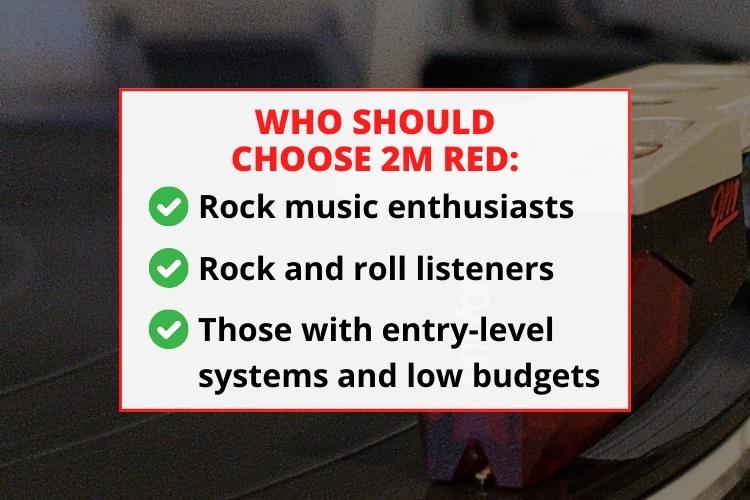
- If you are a fan of rock music, go with Red, as it sounds more natural in this genre.
- People who listen to rock and roll can also go with this cart.
- Also, if you have an entry-level system and a low budget, Red is your pick.
Who Should Choose 2M Blue?
I would suggest you pick Blue due to the following:
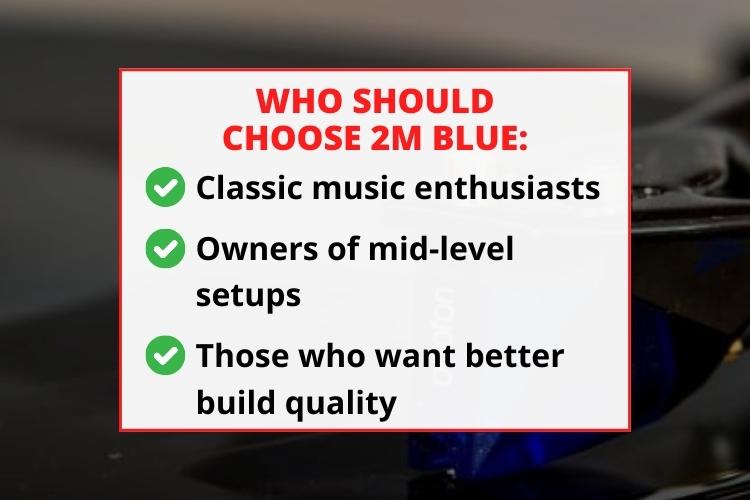
- For classic lovers, Blue sounds much better than the Red one.
- For people with a mid-level setup, it won't disappoint.
- You should choose Blue if you are interested in a better build.
2M Red: Customer Feedback and Ratings
When I inquired about 2M Red, I got mixed reviews. Some were happy with their purchase, while some were offended. Here is a list of some customers that gave their reviews on this cartridge:
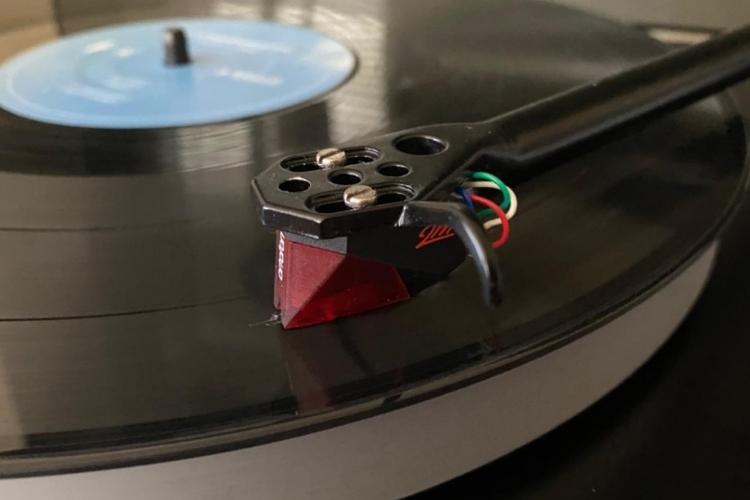
- Scott C. Quimby said he bought this cartridge but couldn't get the desired results. However, after setting the tracking angle, he could play his records smoothly.
- Peter said that his turntable's first needle was broken. He bought this cartridge, and there was a huge difference in the performance.
- Jocke was very happy with her purchase. She mentioned that this cartridge can play quite well with different instruments.
- Eli Philipp got this cartridge for her Technics 1200 MK5 Turntable, and her experience was not so good. She complained of mediocre sound quality and less response than her previous cartridge.
2M Blue: Customer Feedback and Ratings
The following is a list of feedback that I got from a few customers that I meet with:
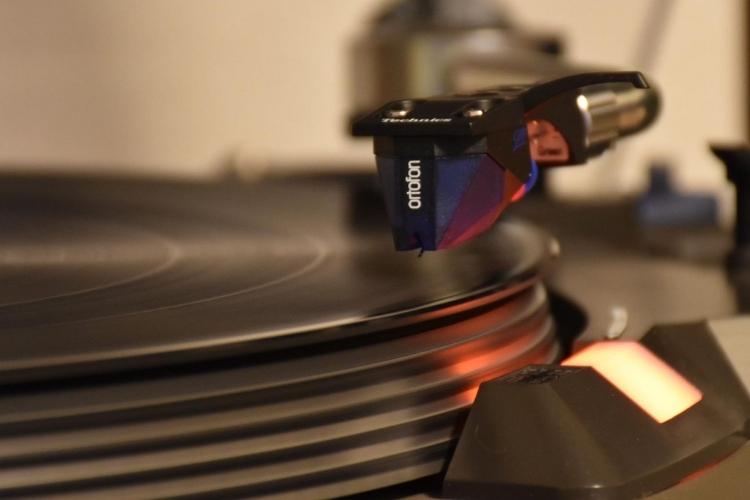
- Chris Back was a huge praiser of this cartridge and was impressed by its sound, build, and versatility.
- Phyllis Jones compared it with a vintage Shure cartridge and considered 2M Blue a huge upgrade.
- Thomas enjoyed the cartridge's warm sound and mentioned that it gave nostalgic vibes. However, he wanted to move to the 2M Bronze stylus because it greatly impressed him.
- Ken Belmont compared this cartridge with Nagaoka MP-110 and rated it higher than 2M Blue.
2M Standard Vs. 2M Verso Vs. 2M PnP: A Comparison of Different Carts of Orton
The following table mentions the salient features of 2M standard vs. 2M Verso vs. 2M PnP:
Feature | 2M Standard | 2M Verso | 2M PnP |
Mounting | Top mount headshell | Bottom mount headshell | Direct mount on s-shaped arms with universal mount |
Alignment | Depends on the tonearm geometry | Depends on the tonearm geometry | Baerwald alignment with most tonearms with universal mount |
Weight | 7.2 grams | 7.2 grams | 20 grams |
Body material | ABS plastic | ABS plastic | ABS plastic with integrated headshell |
Stylus type | Elliptical | Elliptical | Elliptical (Differ depending on the variation) |
Stylus tip radius | r/R 8/18 µm | r/R 8/18 µm | r/R 8/18 µm |
Output voltage | 5.5 mV | 5.5 mV | 5.5 mV |
FAQs
Yes, the Ortofon 2M blue provides better sound quality and audio fidelity than the red, but at over 2x the cost.
The blue has a nude elliptical stylus that tracks better and reveals more detail, while the red uses a standard elliptical stylus.
The 2M red stylus lasts for around 2000 hours of playback time. However, the lifespan can vary depending on the usage, cleaning, and alignment.
The recommended tracking force for Ortofon 2M red is 1.8 grams within the 1.6 – 2 grams range.
Yes, you can put an Ortofon 2M blue stylus into a 2M red cartridge. However, remember that not all of the 2M series are interchangeable. You can't replace blue or red with bronze or vice versa.
The 2M blue stylus is considered Ortofon's best sub-$500 offering, with its nude diamond design outperforming other 2M models.
Recommended read:
Best Place to Buy Vinyl Records: Top 17 Online and Offline Stores
Best Record Player for Beginners: 10 Top Options for Music Lovers
Are Victrola Record Players Good? Yes Or No, Find Here!
Victrola Record Player Skipping: 6 Best Solutions Listed!
MM vs MC Cartridge: Check Right Now Which Is Best?
Are Crosley Record Players Good Choice To Buy in [y]?
Conclusion
Summing up, when it comes to Ortofon 2M Red vs Blue cartridges, it is always important you make a decision depending on your preferences. The Red is your call if you are a beginner with a restrained budget. In contrast, the Blue should be the preference for the audiophiles.
Nonetheless, I'll choose 2M Blue as my go-to cartridge because of its clear sound, expensive soundstage, accurate tracking, and ability to produce warm tones. Moreover, it also falls in the standard category and can be replaced with other 2M standard carts like the Red.
Last update on 2025-04-16 / Affiliate links / Images from Amazon Product Advertising API




